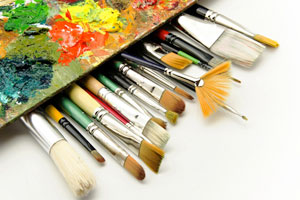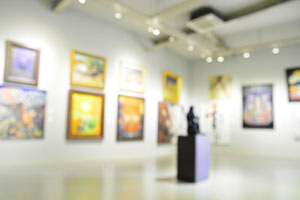Expert witnesses played a key role in an art authentication trial that one art world publication branded as ridiculous and bizarre. The controversy involved a desert landscape that was allegedly painted by Peter Doig. The artist, known for his figurative paintings and his “revolutionary” approach to landscapes, denied that he painted the desert landscape.
Robert Fletcher’s Claim
Robert Fletcher was working as a corrections officer at Thunder Bay Correctional Centre in Ontario during the mid-1970s. He claims that he watched Doig paint the landscape and purchased it from Doig for $100 in 1975, while Doig was serving a sentence for possession of LSD.
The Scottish-born artist lived in Toronto during his teen years, when he worked as a laborer for a gas and oil drilling company. He moved to London in 1979 to attend art school. Doig has been living in Trinidad since 2002.
Doig admits that he occasionally used LSD in his youth but he denies having been imprisoned in Thunder Bay. He also denies painting the desert landscape. Doig’s art dealer contends that Doig did not start painting on canvas until 1979.
Doig’s defense team argued that the disputed landscape was painted by Peter E. Doige, now deceased, an amateur painter who (according to his half-sister) served time in Thunder Bay. That claim is given credence by the fact that the painting is signed “Pete Doige.” Why Doig would add an “e” at the end of his name, and why he would deny painting the landscape if he actually did so, are questions for which Fletcher had no satisfactory answer.
Fletcher’s Lawsuit
The painting is worth millions of dollars if it was painted by Doig rather than Doige. Since the painting’s value depends on its authenticity, Fletcher sued Doig for interfering with its sale by disclaiming creation of the painting. He also asked for a judicial declaration that the painting is authentic.
Fletcher was joined in the suit by Chicago art dealer Peter Bartlow, who is trying to sell the painting on Fletcher’s behalf. He says that Doig “wrecked their plans” to sell the painting for millions of dollars.
Bartlow called Doig a “sociopath” and said that Doig “can’t draw.” That may seem like an odd statement from someone who is trying to sell a painting for millions of dollars that he attributes to Doig, but Bartlow insists that Doig traces his works from projections. Doig denies that allegation.
Expert Testimony
Bartlow testified as an expert in art authentication. He had a financial interest in the outcome of the trial — he will earn a 25{d61575bddc780c1d4ab39ab904bf25755f3b8d1434703a303cf443ba00f43fa4} commission if he sells the painting — but the court decided before the trial that Bartlow was qualified to testify as an authentication expert. The judge noted that all experts get paid and that Bartlow’s potential commission went to his credibility, not to the admissibility of his testimony.
Bartlow testified that he identified “small elements in the disputed painting that can be found in Doig’s verified work, such as the line of a skier’s right arm in a 1994 oil on canvas, Chopper,” which Bartlow claims is “nearly identical to the ridge of a rock formation in the disputed painting.” During cross-examination, Doig’s attorney ridiculed “the Bartlow method” of authentication.
Art historian Richard Schiff, testifying as an expert for the defense, characterized Bartlow’s methods as “entirely unreliable” and suggested (quite sensibly) that expert witnesses should not have a financial stake in verdicts when they testify. After examining other paintings by Doige, Schiff expressed the “firm opinion” that Doige, not Doig, painted the desert landscape, based on the “uniformity of the surface, consistent planar recession, and consistent illumination.”
Art historian Victor Wiener appraised the disputed painting. He testified that it is worth $50,000 to $100,000 if it was painted by Doige and $6 million to $8 million if it was painted by Doig.
The Verdict
The case was heard by a federal judge sitting without a jury. Judge Gary Feinerman decided that Doig “absolutely did not paint the disputed work.” The judge’s remarks seem to suggest that he found Doig’s testimony to be credible and concluded that all of the evidence made an overwhelming case that Doig did not paint the landscape.
Fletcher said he accepted the verdict and still had “personal affection for the painting no matter who made it.” The painting’s notoriety as a result of the trial almost certainly assures that Fletcher will make a tidy profit if he sells it, although he won’t reap the millions for which he and Bartlow had hoped.





